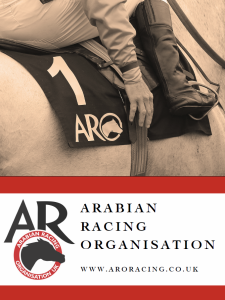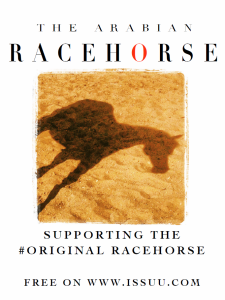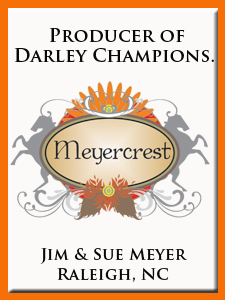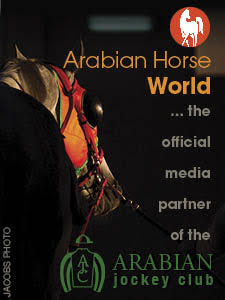The Original Race Horse
In ancient days, the Arabian was bred for war. Endurance to survive the harsh desert conditions of the Arabian peninsula and the speed to carry a warrior swiftly against his foe. Now that same Arabian that left hoofprints in the sands of legend, has come riding through time once more. The horse that carried Alexander the Great on his conquest of the old world, continues to prove itself in our day.
Arabian racing is the most exciting and fastest growing segment of the Sport of Kings. On tracks around the world, these swift and magnificent purebred Arabians are capturing the attention and imagination of a large and growing public.
The Arabian is the original race horse. When the English breeders wanted to add speed and endurance to their horses, they turned to the Arabian. The result was the Thoroughbred. But the Arabian was the source, its blood and spirit created the Sport of Kings.
The Arabian brings to the Sport of Kings a certain timeless spirit that is both unique and compelling. To see them run is to experience something old and enduring, but absolutely new each time. It is to witness perfection in motion. For spectators, fans, owners and corporate sponsors of racing events, the world of the Arabian offers racing at its best.
Origins of Horse Racing
For nearly as long as the horse has been domesticated, racing has taken place. Initially, horse-drawn chariots were commonly seen in competition, but history was made in ancient Greece around 648 BC when the first races with riders were held. Even then, the most successful race horses were taken to exclusive studs to perpetuate their bloodlines. During the reign of the Roman Empire, horse races were occasionally held, but chariot races were the norm. It wasn’t until AD 208 when the Roman Emperor Lucius Septimius Severus led a campaign in Britain that the modern idea of horse racing began to develop. Severus eventually settled in Yorkshire, England and was believed to have laid out the first race track in England. Then in the 8th century, when the Arabs conquered Spain, they rode strong, swift horses, the likes of which were unknown to many in Europe. Subsequently, the fame of the Arabian steeds spread throughout Europe. In 1074, the first races were documented in England at Smithfield Track, and beginning in the 14th century, more and more Arabs, Barbs, and Turkish horses were brought to England for breeding purposes. By crossing these lighter, fleet stallions with the heavier, slower English mares, a hardier horse was developed suitable for warfare;and racing. Thomas Blundeville, one of the founders of the Thoroughbred industry, wrote about consistently breeding noble bloodlines and to follow procedures recommended by Mohammed over a thousand years earlier. Racing continued to develop in England in the early 1600’s through the encouragement of King James I and King Charles I, hence earning the nickname,”The Sport of Kings” Cromwell came to power and outlawed racing in 1654. The ban was short lived because Cromwell’s successor, King Charles II, was a true racing fan, and brought it back to stay in 1660. The horse credited with influencing the modern Thoroughbred more than any other was none other than an Arabian. This horse, commonly known as the Darley Arabian, was brought to England in 1704 and became the main stud at the Darley Estate in Aldby, Yorkshire. While he himself never raced, he was the great-great grandsire of the spectacular race horse Eclipse, supposedly born on the day with a total eclipse of the sun. Eclipse was undefeated in 21 races, but more impressively, approximately 90% of today’s Thoroughbreds trace to him in their male lines.









